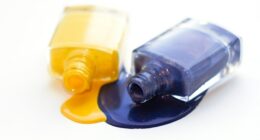Ions are atoms or molecules that have gained or lost electrons and thus have a net electrical charge. Atoms, on the other hand, are neutral and do not possess any net electric charge. Both ions and atoms are important components of many substances in nature but differ from each other due to their different properties.
What are ions?
Ions are atoms or molecules that have gained or lost one or more electrons, resulting in a net electrical charge. This charge is either positive or negative, depending on whether the ion has lost or gained electrons, respectively.
Ions can be formed through various processes such as chemical reactions, radiation, or even just through exposure to an electric field. When atoms or molecules gain or lose electrons, they become charged, and these charged particles are called ions.
In solution, ions play important roles in various chemical reactions and processes. For example, when salt (sodium chloride) dissolves in water, it dissociates into sodium ions (Na+) and chloride ions (Cl-). These ions are responsible for the salty taste of the solution, and they also conduct electricity, which makes them useful in many industrial applications.
Ions are also important in biological systems. Many biological processes, such as muscle contraction and nerve impulses, depend on the movement of ions across cell membranes. For example, nerve impulses are generated by the movement of sodium (Na+) and potassium (K+) ions across the cell membrane.
In summary, ions are charged particles that play important roles in various chemical, physical, and biological processes. They can be formed through various processes and can be found in solutions, gases, and solids.
What are atoms?
Atoms are the fundamental building blocks of matter. They are the smallest particles that retain the chemical properties of an element. Atoms are made up of three subatomic particles: protons, neutrons, and electrons.
Protons are positively charged particles found in the nucleus (central core) of an atom, while neutrons have no electrical charge and are also found in the nucleus. Electrons are negatively charged particles that orbit the nucleus in shells or energy levels.
The number of protons in an atom’s nucleus determines its atomic number, which in turn determines the chemical properties of the element. For example, an atom with six protons in its nucleus is carbon, while an atom with eight protons is oxygen.
Atoms can combine to form molecules through chemical bonding. There are two types of chemical bonds: covalent bonds, in which atoms share electrons, and ionic bonds, in which atoms transfer electrons.
Atoms also have isotopes, which are atoms of the same element with different numbers of neutrons. Isotopes can have different atomic masses, but they still have the same number of protons and electrons, so they have the same chemical properties.
In summary, atoms are the smallest particles that make up matter. They consist of protons, neutrons, and electrons, and their properties are determined by the number of protons in their nucleus. Atoms can combine to form molecules through chemical bonding, and isotopes are atoms of the same element with different numbers of neutrons.
The difference between ions and atoms
(Image by Clker-Free-Vector-Images from Pixabay )

The main difference between ions and atoms is that ions have a net electrical charge, while atoms do not.
Atoms are the fundamental units of matter and are made up of protons, neutrons, and electrons. Atoms are electrically neutral, meaning that they have an equal number of positively charged protons and negatively charged electrons. The number of protons in the nucleus of an atom determines its atomic number and thus its identity as a specific element.
In contrast, ions are atoms or molecules that have gained or lost one or more electrons, resulting in a net electrical charge. When an atom gains one or more electrons, it becomes a negatively charged ion called an anion. When an atom loses one or more electrons, it becomes a positively charged ion called a cation.
Ions can be formed through various processes such as chemical reactions, radiation, or exposure to an electric field. In solutions, ions play important roles in various chemical reactions and processes. They can also play important roles in biological systems. For example, the movement of ions across cell membranes is important for many biological processes, such as muscle contraction and nerve impulses.
The main difference between ions and atoms is that ions have a net electrical charge due to the gain or loss of one or more electrons, while atoms are electrically neutral. Atoms are the building blocks of matter, while ions play important roles in various chemical and biological processes.
How do atoms become ions?
Atoms are electrically neutral because they have an equal number of protons and electrons. When atoms gain or lose electrons, they become ions. Ions are atoms that have a charge because they have more or fewer electrons than protons.
Are atoms and ions the same element?
Atoms and ions are not the same element. Atoms are the basic units of matter and the defining structure of elements. The term “atom” comes from the Greek word for indivisible, because it was once thought that atoms were the smallest things in the universe and could not be divided. Ions are atoms that have gained or lost electrons, resulting in a net charge.
Are ions more stable than atoms?
Whether ions are more stable than atoms depends on the specific situation and context. In general, an ion can be more or less stable than its parent atom depending on its electronic configuration.
When an atom loses or gains electrons to become an ion, its electronic configuration changes, and this can affect its stability. In some cases, the resulting ion can have a more stable electronic configuration than the parent atom, making it more stable overall.
For example, noble gases like helium, neon, and argon have very stable electronic configurations because their outermost electron shells are completely filled. When an atom gains or loses electrons to achieve a filled outer shell, it becomes more stable. This is why the noble gases do not readily form ions in chemical reactions.
On the other hand, when an atom loses or gains electrons to form an ion, it can also become less stable. For example, when a highly reactive metal like sodium loses its outermost electron to become a sodium ion (Na+), the resulting ion has a less stable electronic configuration than the parent atom. Sodium ions are highly reactive and readily combine with other ions or molecules to form stable compounds.
In summary, whether ions are more stable than atoms depends on the specific situation and context. In some cases, the resulting ion can have a more stable electronic configuration than the parent atom, while in other cases, it can have a less stable electronic configuration. Ultimately, the stability of an ion depends on the electronic configuration of its valence electrons and the interactions it has with other ions or molecules.
What are atoms made of?
Atoms are composed of three basic particles: protons, electrons, and neutrons. Protons carry a positive charge, electrons carry a negative charge, and neutrons have no charge. All atoms have at least one proton in their nucleus (the central part of the atom), and most atoms also have at least one electron orbiting around this nucleus. The number of protons in an atom’s nucleus determines that atom’s element. For example, all atoms with six protons in their nucleus are carbon atoms.
How do you find ions?
To find ions, you must first determine what kind of ions you are looking for. There are cations, which are positively charged, and anions, which are negatively charged. Once you know the charge of the ions you are seeking, you can use a variety of methods to find them. For example, if you want to find cations, you could use a Bunsen burner to heat up a sample of the substance in question. The heat will cause the cations to become excited and jump to the cathode, which is where they will be collected.
Why do we need ions?
Ions are atoms that have gained or lost electrons, giving them a net charge. This can happen when an atom reacts with another atom, or when it gains or loses protons.
Ions are important because they allow atoms to form bonds with each other. When atoms share electrons, they form ionic bonds. Ionic bonds are strong bonds that hold together molecules, like DNA.
Ions also allow atoms to conduct electricity. When ions flow through a wire, they create an electric current. This is how batteries and power plants work.
Without ions, life as we know it would not be possible.
Featured Image By – Image by Gerd Altmann from Pixabay








